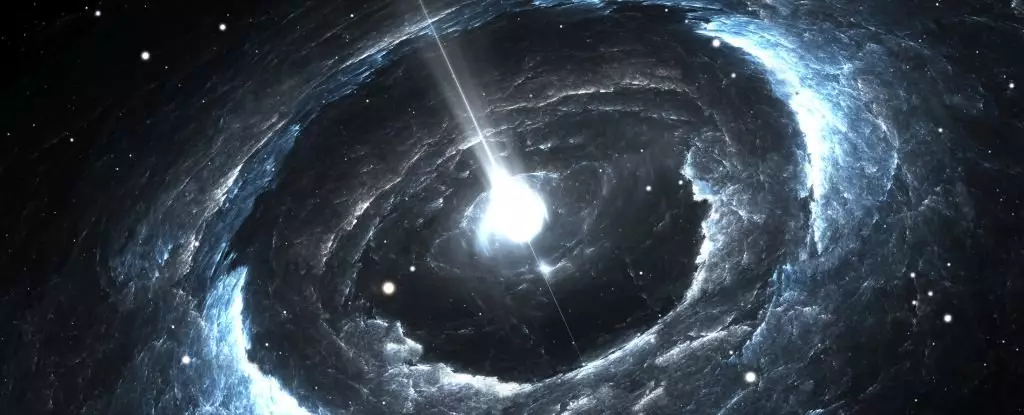Fast radio bursts (FRBs) have captivated the imaginations of astronomers and scientists due to their intense and enigmatic nature. These rapid flashes of radio waves from deep space have posed a challenge in unraveling their origins and understanding the mechanisms behind their creation. Recently, researchers made a significant breakthrough in tracking down the source of the most potent and farthest-traveling FRB ever recorded, shedding light on the diverse environments that can give rise to these intriguing emissions of light.
An International Team’s Investigation
Led by an international team of researchers, the investigation utilized imagery from the Hubble Space Telescope to narrow down the origin of the FRB, named FRB 20220610A. The data revealed that the burst emanates from a densely-packed cluster of seven galaxies. This finding provides valuable insight into the potential role of interactions between galaxies in the creation of FRBs, challenging prevailing theories about the universe’s operations.
Astronomer’s Reflection
Astronomers and astrophysicists have long been baffled by FRBs, and this particular discovery has compelled them to reconsider and explore the conditions under which these bursts may form. Astronomer Alexa Gordon from Northwestern University remarks, “Without the Hubble’s imaging, it would still remain a mystery as to whether this FRB originated from one monolithic galaxy or from some type of interacting system.” This realization emphasizes the significance of studying unusual environments like these to deepen our understanding of the enigma of FRBs.
To comprehend the extraordinary journey of FRB 20220610A, one must envision the vast timescales involved. The Universe is estimated to be approximately 13.8 billion years old, and the signal of this FRB originates from a period when the Universe was merely five billion years old. Such a remarkable timeframe underscores the immense distances traveled by these bursts and serves as a reminder of the vastness of our universe.
Initial observations of the blob-like structure near the FRB’s origin led researchers to contemplate the involvement of multiple galaxies. However, the discovery of seven tightly-knitted galaxies caught them by surprise. Interestingly, these galaxies could fit within the confines of our own Milky Way, highlighting their compactness. The close proximity and interaction between these galaxies offer potential explanations for the strength of the FRB, such as the formation of stars in rapid succession or the exchange of materials between the galaxies.
The Significance of Compact Groups
The cluster of galaxies where FRB 20220610A originates from is known as a “compact group.” These environments are exceptionally rare in the Universe and represent the densest structures on a galaxy scale. The existence of FRBs within these compact groups provides scientists with a unique opportunity to study and understand these cosmic phenomena. By exploring the evolution of FRBs and their host properties, researchers can establish connections and patterns with nearby FRBs, potentially unveiling even more peculiar populations.
Despite the progress made in recent years, the mystery of FRBs persists. As our telescopes improve, enabling us to observe space with greater precision and resolution, we are hopeful that more answers will emerge. The current belief is that FRBs emanate from cosmic objects like neutron stars or black holes, but many questions about their exact origins and properties remain unanswered. Dong, a researcher involved in the study, highlights the significance of a broader sample of distant FRBs, as it would enable scientists to study their evolution and connection to nearby FRBs, potentially uncovering more perplexing populations.
Fast radio bursts continue to captivate scientists and astronomers worldwide, offering tantalizing opportunities to deepen our understanding of the cosmos. The discovery of the origin of FRB 20220610A within a cluster of interacting galaxies adds another layer of complexity to this cosmic enigma. The pursuit of answers and the unraveling of the mysteries surrounding FRBs serves as a testament to humanity’s insatiable curiosity and our unending desire to explore the unknown realms of our universe.



Leave a Reply